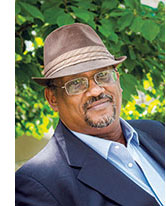 Among the most important issues in U.S. higher education right now is the lack of diversity in student and faculty populations. The situation is particularly troubling in graduate education, where the lack of diversity is largely influenced by the history of deficient K-16 institutional support for underrepresented and minority groups, and consistently low levels of diversity among faculty members.
Among the most important issues in U.S. higher education right now is the lack of diversity in student and faculty populations. The situation is particularly troubling in graduate education, where the lack of diversity is largely influenced by the history of deficient K-16 institutional support for underrepresented and minority groups, and consistently low levels of diversity among faculty members.
The time to diversify higher education is now, but we must do so by taking a step back and deconstructing the notion that we can fix the issue with a few tweaks to admissions or recruiting processes. We must approach longstanding, sometimes uncomfortable, institutional issues with a multipronged and deliberate plan of action. This includes examining the full educational journey of a student and beginning to implement thoughtful solutions from kindergarten through graduate school if we want to challenge — and change — the status quo.
When students at every level of education have strong psychological support groups, they are much more likely to succeed. For example, when low-performing students in a Louisiana district were provided a “learning support” program consisting of psychological and educational support to counter barriers to success, their graduation rate rose by over 8 percent. The district also saw a significant rise in overall academic success.
Equipping students with tools they need to develop their social skills and emotional intelligence is another critical step. Some students have never been exposed to concepts like self-management and the regulation of emotion, not to mention the intangibles that go into building healthy relationships and making responsible decisions in their own self-interest.
Allocating funding for school psychologists, academic counselors and other one-on-one support systems are commonsense steps for institutions to support vulnerable students during vital years of cognitive development that can ultimately impact the personal, academic and professional aspects of a student’s life.
Some graduate programs have identified dropping the GRE as a solution to increase diversity. In examining our admissions processes, faculty and admissions officers must challenge the belief that building diversity hinges solely on changing one criterion.
Disregarding the one piece of an admissions packet that levels the playing field across race, gender and socioeconomic status is a step back to when social class was a determining factor in the college admissions process. Admissions processes that use standardized assessments, coupled with more subjective measures like essays, internships and interviews, are inherently fairer and more respectful to applicants.






























































